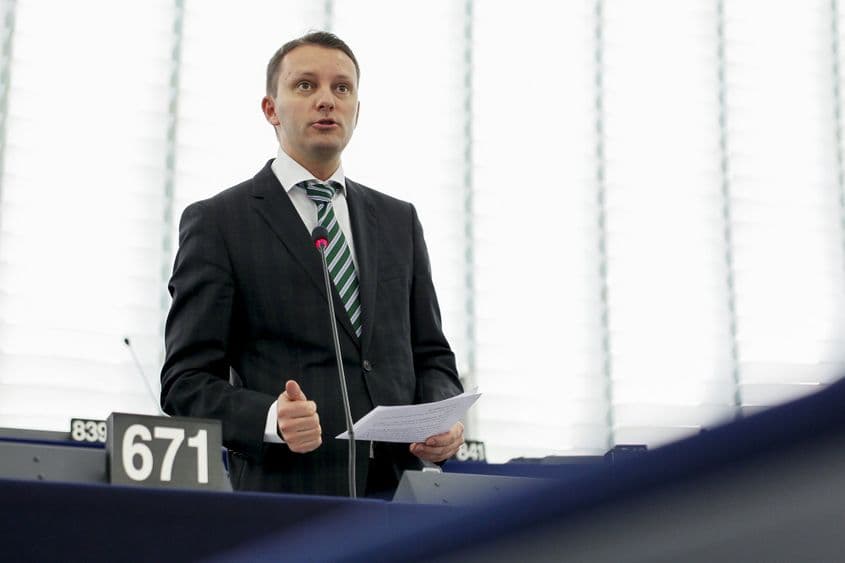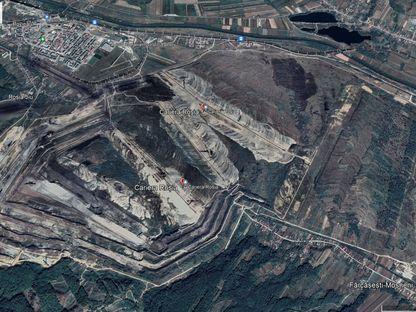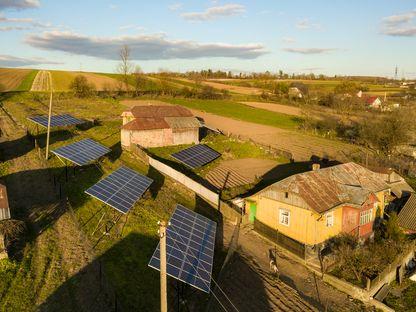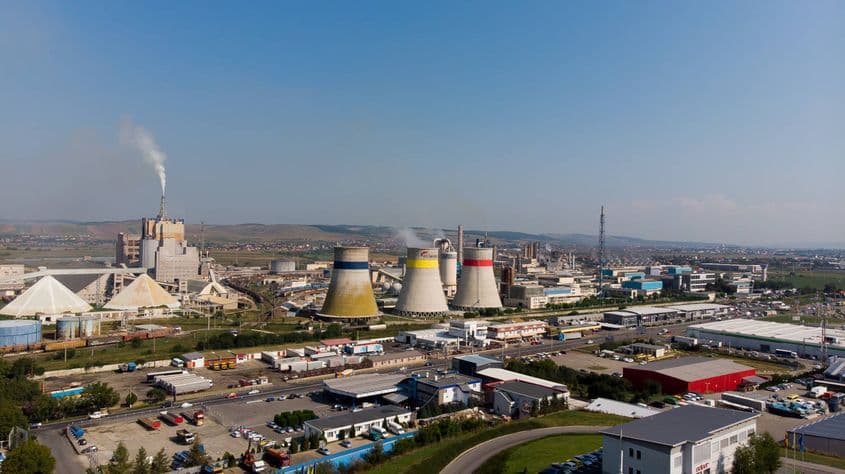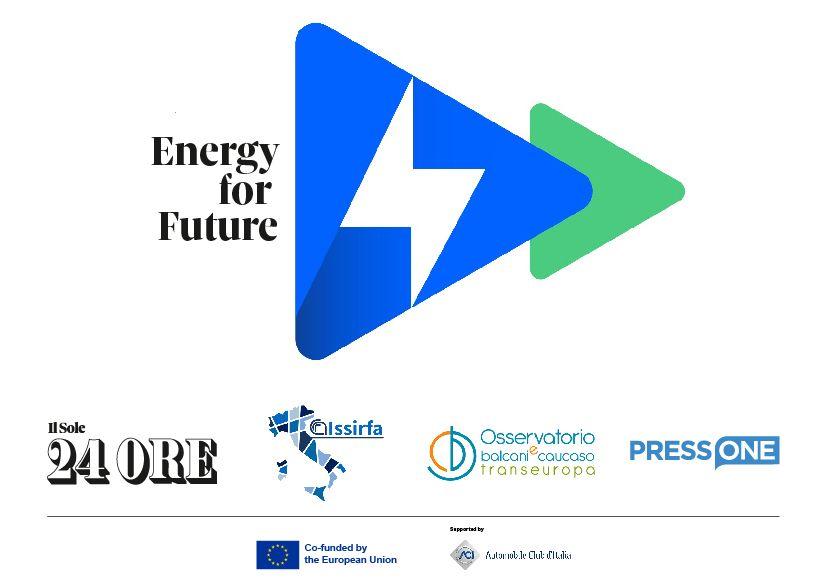
Mining died in Petrila
24/01/2024
"Professional reconversion has failed when miners are retrained as barbers". Romanian counties receiving over €2 billion from the EU for more green
In addition to EU structural and investment funds, from 2021 Romania also has access to money from the Just Transition Programme. What does this programme mean, how much money can Romania actually receive and what is it earmarked for?
In the 2019 European Parliament elections, a large number of people who voted, especially young people and especially those who voted for pro-European parties, said they expected the European Union to do more to fight climate change.
So a just transition mechanism was created, which also contains a just transition fund: European funds for regions where the transition to climate neutrality will be most difficult. Romania is the third largest beneficiary after Poland and Germany and ahead of the Czech Republic and Bulgaria.
Romania has been allocated €2.14 billion, plus €360 million in co-financing from the government. The money would fund projects in six vulnerable counties in Romania, where the biggest polluters operate and where heavy industry will need to modernize from the ground up. These are Dolj, Gorj, Galati, Hunedoara, Mures and Prahova.
But this is not the first time the Romanian state has tried, with or without European funds, to revitalize the economy of disadvantaged areas that were formerly mined or where heavy industry collapsed after communism. In the past, conversion plans for areas such as the Valea Jiului (Hunedoara county), for example, have failed miserably. 17 mines were closed, but subsequently funds for new jobs or retraining of miners did not produce any noticeable change in the county's standard of living.
What should the Romanian state do now to make the Just Transition Programme different from other attempts? How much money will go to each of the six counties and by what criteria? I asked Siegfried Mureșan, MEP (PNL) and rapporteur of the Budgets Committee in the European Parliament on this programme.
Siegfried Mureșan, PNL MEP and rapporteur of the Budgets Committee in the European Parliament on the Just Transition Mechanism
Reporter: Will the money be divided equally among these counties or according to need? How is the division done?
Siegfried Muresan: Each county has to come up with a programme that is funded and basically each county has an amount. The total amount is divided roughly six ways.
The discussion was whether the money from the programme should go to all counties or whether it should go only to the most affected counties. I too have argued, as rapporteur for the Committee on Budgets in the European Parliament, that the most affected counties need help and if we allocate this limited amount of EUR 2.5 billion to 40 counties, the amount that will go to each county will be too small to really make a difference.
Mulți ne citesc, puțini ne susțin. Fără ajutorul tău, nu putem continua să scriem astfel de articole. Cu doar 5 euro pe lună ne poți ajuta mai mult decât crezi și poți face diferența chiar acum!
And that's why we have €2.5 billion allocated to only six counties, areas where we have mining, heavy industry, steel industry, chemical industry.
How are these cities different when it comes to the transition to green energy? How does a mining town differ from another poor town in the rest of the country?
| GDP of each county as a percentage of national GDP (2021): Hunedoara 1.53%; Dolj 2.61%; , Galați: 1.74%, Prahova 3.91%; Mureș 2.1%; Gorj 1.52%. |
| Number of SMEs (2021): Hunedoara 1046; Dolj 1641; Galați 1174; Prahova 2009; Mureș 1634; Gorj 337 |
| Average net salary (August 2023): Hunedoara 3445 lei; Dolj 4086 lei; Galați 4035 lei; Prahova 4169 lei; Mureș 4297 lei; Gorj 4025 lei. |
Coal Mining Expansion Leads to Deforestation: Over 470 Hectares of Forest Cut Down in Gorj, Romania
Over the past six years, more than 470 hectares of national forest land have been allocated by the government, without compensation, to the Oltenia Energy Complex (CEO) for the expansion or opening of new coal mines.
The not-so-green Romania. The state delays settlements for photovoltaic panels by 2 years
PressOne reviews the main dysfunctions in the production, consumption and distribution of energy from renewable sources, as revealed by discussions with consumers and data provided by official sources at the request of our editorial office.
| Unemployment rate (August 2023): Hunedoara 4.1%; Dolj 7.1%; Galați 5.4%; Prahova 2.4%; Mures 2.7%; Gorj 3.1%. |
Firstly, the European Union has more European funds at its disposal these years than ever before. We have decided that 30% will go towards the transition to a green economy, about 27% of the EU's traditional budget and 37% of the European Recovery and Resilience Mechanism.
It is therefore justified that, in addition to the many European funds that are available to all counties on greening, the 6 most heavily affected counties in Romania should receive this extra money.
Un newsletter pentru cititori curioși și inteligenți.
Sunt curios
Why do they need more funds? Because in counties where mining activity is restructuring, there are thousands of new jobs to be created in sectors of the economy. That is why I have been very insistent that the money should be used for economic transition, not just for social measures that do not give people a long-term perspective.
Is the money mainly aimed at jobs or at reducing pollution caused by local companies, some owned by the Romanian state itself?
The urgency to create jobs in these counties is greater. In addition, the investment needed to reduce carbon dioxide emissions in these big steel and chemical consumers is also higher.
These are single-industry areas and this is the difference between mining areas and less developed areas of the country, which are, however, more diverse in terms of economic structure.
We need to bring in investors and at the same time retrain the workforce, but this should not be an end in itself but a tool.
Vocational retraining has failed where former miners have been retrained as hairdressers, although there was no need for so many hairdressers, there was a need for people in other trades.
Retraining must be done after assessing the potential and possibility to generate new investment in the region. Who wants to come, what qualifications are needed.
Is there currently such a mapping done at the 6 county level? What is there, what is needed, what can be done and with whom?
In addition to the objectives of modernizing public services, developing the county transport infrastructure, encouraging green energy, objectives that exist in all the counties, there are also area-specific objectives. This is also helped by how well the counties are connected in terms of infrastructure.
For example, Hunedoara county, which is quite well connected by motorway, by railways, both to European life, to the west, and to the rest of the country, we believe it has a great potential for the development of the business environment and entrepreneurship.
So does Prahova county and there, economic diversification, research development, innovations supporting SMEs are among the priorities of the county project to attract funds from the mechanism of the just transition fund.
But for areas less connected to Europe and the rest of the country, where perhaps the interest of entrepreneurs is not as high, how can this be done? What are the tools through which they can grow?
Increasing the quality of public services is a common denominator in all counties. After that supporting the traditional industrial sectors of the county. For example, in Galati county we want to support steel production. But what is needed is investment to ensure that this production is in harmony with the environment.
In Galati, the issue is not about replacing the steel producer, but the priority is to produce in harmony with the environment, to reduce emissions, to increase research and development, to work with universities and even with civil society to develop new technologies.
Also, in Galati county, which is further away from the European market, engineering and shipping are sectors that need to be supported. Obviously, ships with environmentally friendly propulsion, fishing, tourism, information technology, aquaculture. What I am trying to say is that Galati County also has economic potential and even a competitive advantage in terms of maritime and naval transport due to its proximity to the Danube and, by extension, to the Black Sea.
You are talking about Hunedoara and Galati. What is the development potential of the other four counties and what are the concrete plans, beyond good intentions?
In Gorj county, improving public infrastructure and supporting SMEs are also among the objectives. Investments in renewable energy play a particular role. As well as measures that will lead to increased energy efficiency, including in the public sector: schools, hospitals. This will mean that we will be able to achieve our goals through lower energy consumption, which means lower costs and less pollution.
Possible investments in Gorj county include the manufacture of telecommunications equipment, medical equipment, electronics and possibly batteries for electric cars. The region's natural resources are a competitive advantage.
In Dolj County, increasing public services, developing the entrepreneurial environment and increasing the share of the population's access to electricity and heating are the county's needs.
Better connecting the region's economy to the rest of the country and to major transport routes is another priority, both for road and rail infrastructure.
After that, of course, industrial engineering and projects to produce energy from alternative sources, especially photovoltaic sources, are among Dolj County's priorities, given its specific climate.
Prahova County is close to the Bucharest-Ilfov area, which is highly developed from an economic point of view, so in Prahova County the need is to support SMEs, the entrepreneurial environment and the development of innovation research.
There we see potential to generate investment in equipment for the automotive industry, in innovation services in the tourism industry, as Prahova County has both an industrial specificity, especially in the southern part of the county, and a specificity related to tourism. So investments in innovation services in the tourism industry, enhancement of cultural heritage and, basically, a new approach to tourism, an integrated tourism of the cultural spa type.
In Mures County, obviously, the objective is to reduce the carbon footprint, reduce carbon dioxide emissions, reduce pollution, on the one hand, and in parallel to support SMEs and the emergence of alternatives in the economic field. This while protecting jobs in the chemical industry.
The chemical industry must be supported, jobs must be protected, but investment must be made so that they produce while polluting the environment. Other sectors of the economy that we need to help there are wood processing, but using raw material in a sustainable way, traditional local construction, including natural, insulation, thermal products that are used in the region.
Almost 10 years into the 2014-2020 financial cycle, Romania has managed to attract about 82% of the money it was entitled to. Why would the situation be any different for funds from the just transition programme? What are the chances of the money being fully accessed?
First of all, I am absolutely convinced that by the time the accounts for 2014-2020 are closed, i.e. 31 December 2023, the absorption rate will be over 90%.
Since Romania joined the European Union until today, it has absorbed about 5 times more European funds than it has paid out. The 2014-2020 financial year is not over yet, we are allowed to use this money until 31 December 2023.
Here some of the funds, especially the money for agriculture comes automatically. And with what we will still use from the structural and cohesion funds, this means, on average, an absorption rate of over 95%. So any losses I think will be very small compared to what we have managed to absorb.
I think we will be able to absorb the funds from the transition mechanism just because they are decentralized programmes, which take into account the specificity of the county and the money will be quite easy for the counties to access.
After the coronavirus pandemic, the EU launched the largest economic aid package of around €700 billion, of which Romania is to receive €28 billion for the NRDP. We only have this money until 2026, which is why there has been pressure in all Member States to start absorbing it. All Member States have focused on attracting money from the national NRDPs in order not to lose it.The governments have also focused on attracting money from 2014-2020, as we would lose this money at the end of this year.
These priorities have been correct at the level of all governments, but they have led to some delays in starting the absorption of money from the 2021-2027 exercise and now it is clear to me that from 1 January we will have an increase in the absorption rate of these new European funds. Until now, governments have focused on the old exercise, so as not to lose money, but now we will have to accelerate the absorption of these new funds.
In this context, how, in concrete terms, should public authorities change their approach to the absorption of funds available through the fair transition mechanism from structural and investment funds?
I believe this is already happening. Just as the different approach was necessary for the NRDP, because the NRDP is a package of investments and reforms, and I think the authorities now understand that the NRDP is not just about money, but also about reforms. If we do not meet those milestones, the European Commission will not be able to make our payments.
I insist: in concrete terms, what should change in Romania from this point of view?
Firstly, this decentralized approach, taking into account the specific needs of each county. And secondly, to resist the temptation to allocate money to these counties on failed projects of the past. Let's not retrain just for the sake of it. And we need to prioritise economic development and, because European legislation requires this, I think the six counties' programmes take this into account. There are already projects to develop industry, the business environment, to support SMEs. In other words, economic development programmes that are necessary for economic growth and for increasing the number of jobs in those counties. So the paradigm I think has been changed and the thinking is correct.
The money is at Romania's disposal, and for the projects that are now underway, I believe that they will be settled in the immediate future.
This article is published in the framework of the "Energy4Future" project, co-funded by the European Union. The European Union is not responsible for the information and opinions expressed in this project and article. Responsibility for the content lies entirely with PressOne.
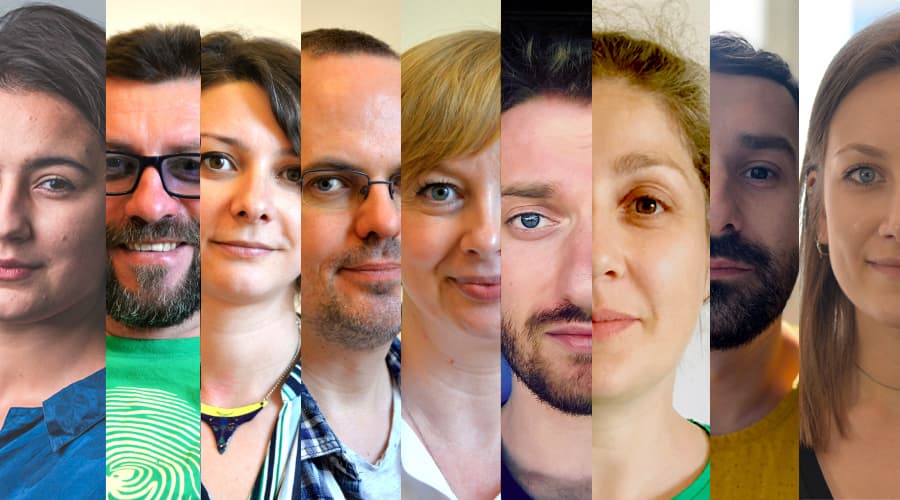
Avem nevoie de ajutorul tău!
Mulți ne citesc, puțini ne susțin. Asta e realitatea. Dar jurnalismul independent și de serviciu public nu se face cu aer, nici cu încurajări, și mai ales nici cu bani de la partide, politicieni sau industriile care creează dependență. Se face, în primul rând, cu bani de la cititori, adică de cei care sunt informați corect, cu mari eforturi, de puținii jurnaliști corecți care au mai rămas în România.
De aceea, este vital pentru noi să fim susținuți de cititorii noștri.
Dacă ne susții cu o sumă mică pe lună sau prin redirecționarea a 3.5% din impozitul tău pe venit, noi vom putea să-ți oferim în continuare jurnalism independent, onest, care merge în profunzime, să ne continuăm lupta contra corupției, plagiatelor, dezinformării, poluării, să facem reportaje imersive despre România reală și să scriem despre oamenii care o transformă în bine. Să dăm zgomotul la o parte și să-ți arătăm ce merită cu adevărat știut din ce se întâmplă în jur.
Ne poți ajuta chiar acum. Orice sumă contează, dar faptul că devii și rămâi abonat PressOne face toată diferența. Poți folosi direct caseta de mai jos sau accesa pagina Susține pentru alte modalități în care ne poți sprijini.
Vrei să ne ajuți? Orice sumă contează.
Share this


